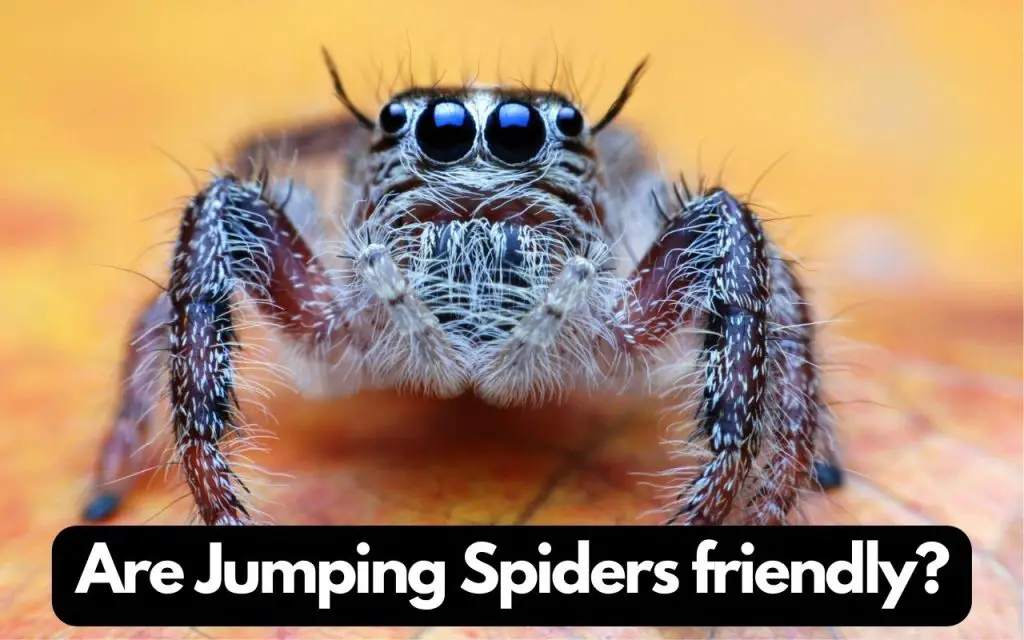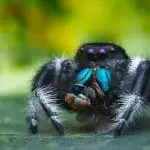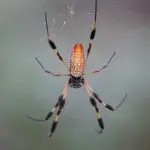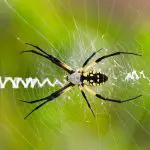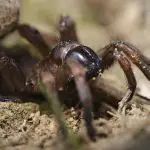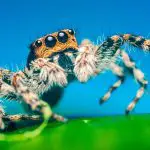Jumping spiders are among the friendliest spider species to humans. Although carnivorous, they target small insects and other spiders of their size or less. However, sometimes they can bite, but only when attacked. But again, their bite is harmless and heals on its own.
Jumping spiders comprise a large percentage of the world’s spider population, with more than 5000 species. They are about 1 cm or less in size, and their distinct hunting style is their primary distinguishing factor. They also have some of the brightest colors compared to other spiders, with the male using the brightness to attract females.
Are Jumping Spiders Social?
Jumping spiders are the most social spider family and do not shy away from people. Their curious behavior can make you want to keep them in your house. For instance, if jumpers see you staring, they may not try to escape unless you threaten to attack them. Instead, they stand still and stare back with their large middle eyes.
On the contrary, a jumping spider may not appreciate your handling or touching it, so the best way is to nudge it to move carefully. Some people keep these creatures as pets due to their social tendencies and lovely colors.
Can You House Jumping Spiders Together?
Keeping more than one jumping spider in one terrarium can be dangerous to them. While they appear social and friendly with humans, you cannot say the same about each other. These are predatory creatures that perceive any other insect as food. Thus, if you wish to rare more than one jumper, it would help to prepare a separate cage for each.
Why Are Jumping Spiders So Friendly?
Jumping spiders appear too friendly to humans because they do not consider them a threat. In addition, they are inquisitive. As a result, they may sit still and observe you. They may jump onto your shoulder or hand unless you scare them away.
Nonetheless, it is advisable to handle them with care since they are wild creatures and might attack you in defence.
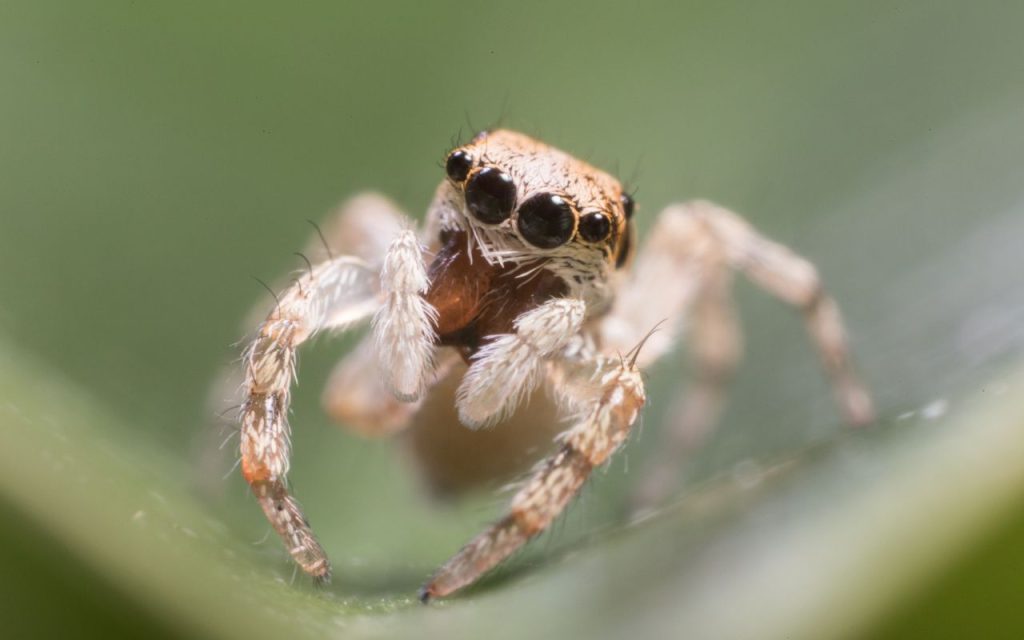
Can You Bond with A Jumping Spider?
Taking your jumping spider out for a “walk” can be a brilliant way to bond. Observing it when out of its container is the best part of handling this unique pet. Therefore, it would be best to understand how to handle the jumper, especially if you are a first-timer.
Here are some guidelines on how to handle a jumping spider at home.
There are two ways to handle a jumping spider; guiding it to your hand or tricking it to hop on your hand. Nevertheless, both approaches require patience.
To guide it, place your hand in front of the spider and poke its abdomen slowly to climb on your hand. Again, it is wise to observe its reactions in the process.
On the other hand, you can wait until it jumps and rests on a high point. When it starts to wave the front legs in preparation to jump, offer your hand as a landing ground. Once the spider rests on your hand, join your other hand so that it can move around comfortably.
However, avoid handling your jumper in the moulting period, as it may become defensive. Additionally, disturbing it during this time results in moulting difficulties.
Are Jumping Spiders Smart?
Although jumping spiders have tiny brains, studies show they are intelligent creatures who can learn. Here are some facts to prove that they are the most intelligent spider species.
- Most of the jumping spider species make a clear plan to trail their prey instead of jumping on it blindly. Furthermore, they use their excellent eyesight to spot their prey even in hiding.
- Even the most primitive jumping spiders – that is to say members of the subfamily Spartaeinae – are notably more intelligent than other spiders
- Studies show that a jumping spider can navigate an obstacle successfully.
- According to research, a jumping spider has an excellent memory. With this, they can keep site fidelity, where they always return to a place if they find it ideal for hunting or resting.
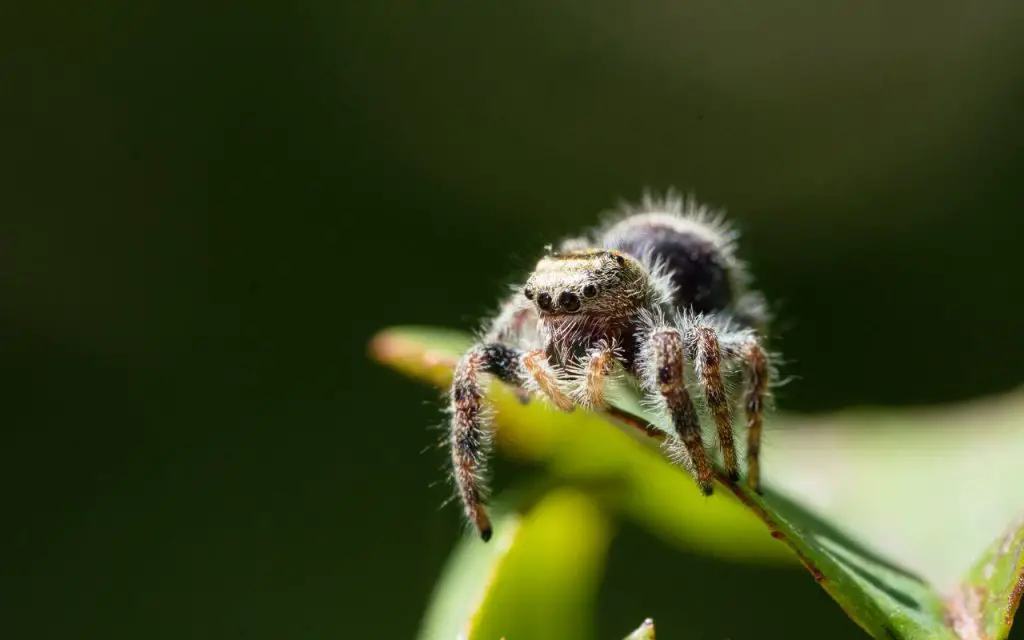
Do Jumping Spiders Bite?
A jumping spider can bite you, but only if it feels threatened. Nonetheless, the bite is less painful than a bee sting and cannot cause much harm. It may not show symptoms to many people, but some experience a tiny mosquito-sized bite welt.
On the contrary, it would be best to be sure if the bite comes from a jumping spider or other poisonous species.
Additionally, if you are allergic to the venom, the bite can cause health concerns. In this case, it is advisable to seek immediate medical assistance if you have severe symptoms.
Are Jumping Spiders Poisonous?
Jumping spiders are neither poisonous nor venomous. However, their bites can result in mild symptoms, including itching, swelling, redness, and stinging. Suppose you suspect a jumping spider bite; clean the spot with soap and clean water. Then, place an ice compress over the bitten site to ease the swelling.
How Toxic Are Jumping Spiders?
A jumping spider is not toxic and does not cause danger to humans. In fact, this spider may not bite you except in defense. Although they have fangs that produce venom, it does not cause any medical threats.
Are Jumping Spiders friendly? Final Thoughts…
Jumping spiders are friendly and social with humans, but it is not the same with each other. They are smart, curious creatures that prefer to sit still and observe people and will only run if you scare them away.
However, it is important to understand that a jumping spider does not appreciate human touch. Therefore, it is wise to avoid handling or touching them since they may feel threatened and can bite.
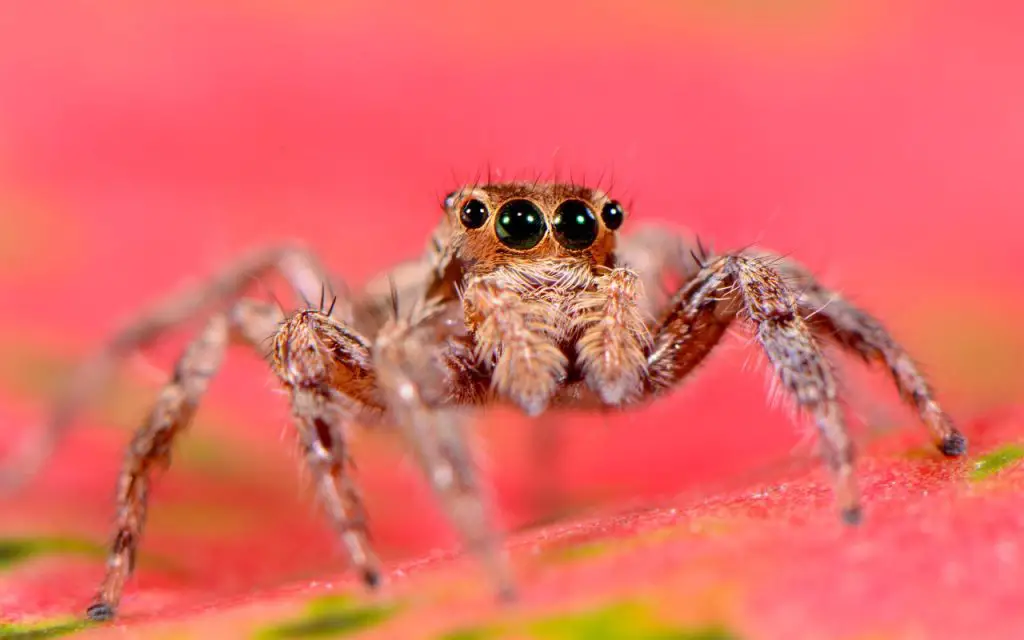
FAQ Related to Jumping Spider Temperament
Do Jumping Spiders Like Being Petted?
Like many insects and spiders, a jumping spider does not appreciate human touch. Therefore, it is wise to avoid handling your jumper all the time. It does not love petting, so try to nudge it to move if you must.
Do Jumping Spiders Get Along with Humans?
Jumping spiders are harmless and get along well with humans. Sometimes they may attack, but only when cornered or attacked.
Can You Interact with Jumping Spiders?
Jumping spiders are friendly, and you can interact with them easily. They rarely run or shy away from people unless there is a threat.

